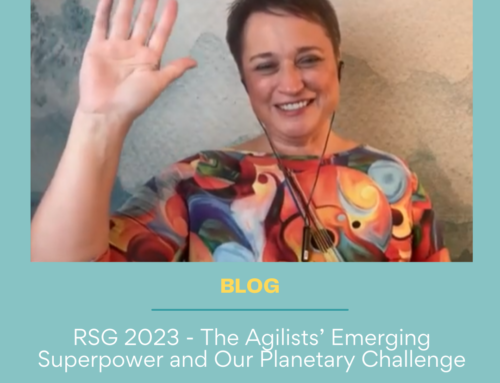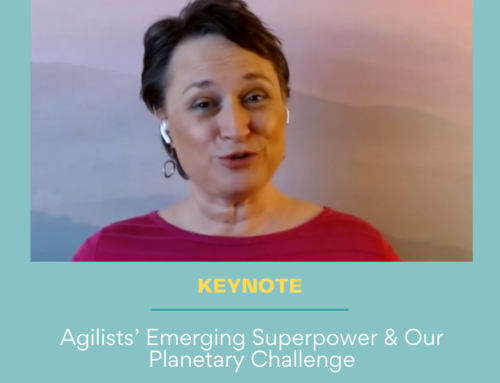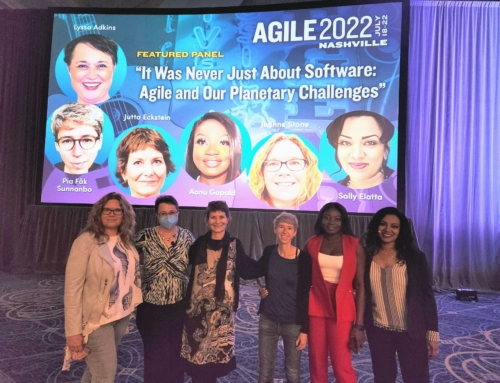LYSSA ADKINSNOVEMBER 29, 2010
Consider this…
The word dialogue comes from the Greek dia, which means through, and logos, which means word or meaning. So dialogue is about letting meaning flow through our words. In a true dialogue, we hear each other’s words to gain new understanding and find shared meaning. What most of us do is discuss, which comes from the same root as concussion and percussion, we try to shake things up and find the answer. In searching for that answer we often talk right past each other, jumping in, naming solutions, failing to leave the silence spaces that are needed to allow the meaning of what the other person has said seep into our heart, before we begin to form a response. ~ Suzanne Marsh
How much does the team you coach engage in dialogue versus discussion? If your team is anything like those of the other coaches I coach, I’ll bet it’s on the discussion side most of the time. Yet, we all know that to get to astonishing results – the kind agile was created to produce – we need to move toward dialogue more of the time. This is why I encourage teams NOT to talk, at least not initially. Instead, I coach them to use silent work techniques to get ideas out individually and collectively before we talk and start pulling them apart (or better yet, building on them to achieve real collaboration, but that’s a story for another blog post).
So, what are these silent work techniques? Basically, anything that allows people to contribute their ideas before anything gets talked about. This way, the quiet people are seen for the brilliance that was always there (and just couldn’t get a word in edge-wise) and the talkers also get heard but at the same volume as everyone else.
Some specific techniques I have taught are those for writing user stories silently. I led a session on this at Agile 2010 and David Draper, who attended the session did a great job with this blog post, in which he runs down how the silent techniques worked so that you can do them yourself with your own teams. I also gave this session at the Agile Development Practices/East conference and have these “metrics” to report for each of the 5 minute rounds:
Round 1: People sitting around a table talking. The average number of user stories per table was 6.
Round 2: People silently writing their own user stories. Average number: 31

Round 3: People collaboratively and silently writing users stories, each person writing just one phrase of the user story format and then passing it on the the person beside them. Average number: 12
Round 4: People collaboratively and silently writing users stories, each person writing just one phrase of the user story format and then passing it on the the person beside them. This time, they wrote the user stories out of “order” – value phrase first, then specific user, then the “wants something” phrase. Average number: 12
Round 5: Collaborative and silent mind mapping of product backlog items (didn’t bother with user story format for this “first cut” method). Average number: 31
An important thank you to Tobias Mayer who introduced me to this user story writing technique.

Let’s count it up…that’s over 500 user stories written in about an hour. 41 people, 500 user stories (well, actually way over 600 if you count the mind map ideas). Are some silly and ready for the garbage pail? Sure. Are some brilliant and useful in ways no one could have foreseen? You bet. Do some contain the seed of a real money-maker, game-changing idea that moves us toward the “astonishing”? Absolutely.
Here’s the best part…everyone’s voice was heard and everyone got to contribute in meaningful ways to the outcome. I wonder what would happen to your teams if this became the norm.
Try it and let us all know.
ps. You may have experienced it…that deathly silent moment that comes when the team moves into “tasking out” the work for the sprint? (A collective groan would escape their lips if only they weren’t so polite). Next time, keep it silent by suggesting silent mind mapping. This time, the silence will be golden.






